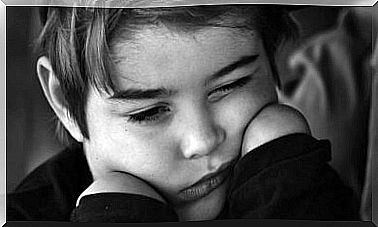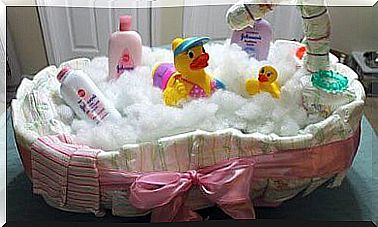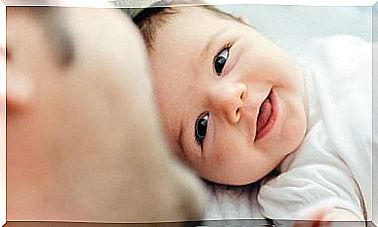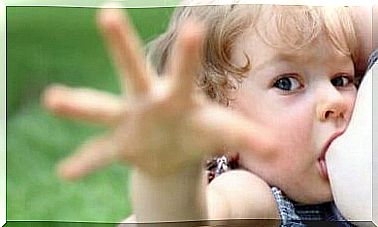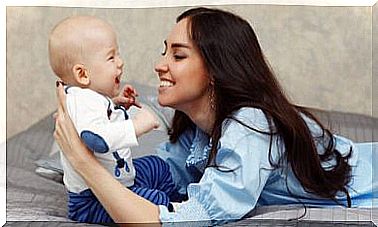My Baby Has Watery Eyes my
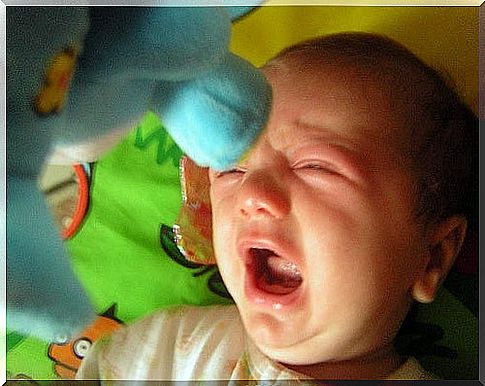
There are several reasons why your baby may have watery eyes, but two cases are more common: being born with a blocked tear duct or suffering from conjunctivitis. In both cases the treatment is simple and it is only necessary to be strict with hygiene.
Some children are born with an obstructed tear duct, this produces tearing and often persistent infection with purulent discharge as in conjunctivitis.
This situation usually improves over time, however the Spanish Association of Pediatrics recommends that you give a massage by squeezing the tear duct outward.
If the problem persists for 6-12 months the optician may need to unclog the canal with a very fine probe.
In most cases, conjunctivitis will cure itself, but treatment is recommended to shorten its duration and prevent contagion and complications.
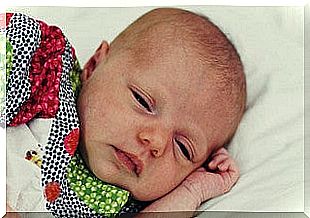
What is conjunctivitis?
The documents of the Spanish Association of Pediatrics explain that conjunctivitis is an inflammation of the conjunctiva.
The conjunctiva is the outermost layer of the eye that covers the visible area of the eyeball and the inner part of the eyelids. The conjunctiva is almost transparent under normal conditions.
She also states that conjunctivitis can be infectious (caused by bacteria or viruses), allergic (caused by an allergic reaction), irritating (caused by a foreign body in the eye), or chemical (caused by a chemical).
The information may make you nervous, but you don’t really need to worry because most conjunctivitis is mild, only on rare occasions can it cause more serious damage.
Keep in mind that infectious conjunctivitis can be caused by bacteria or viruses. 80% of infectious conjunctivitis is caused by bacteria that normally live in the nose or on the skin. The other cases are viral.
Conjunctivitis is the most common eye infection in children. Although most conjunctivitis is contagious, it usually does not damage the eye or vision.
Symptoms of conjunctivitis
Most likely, your child will complain of discomfort in the eyes, which do not improve when rubbing them, and even start to hurt.
After that the conjunctiva will be reddened and slightly inflamed, which is known as a red eye. It often feels like you’ve stuck something in your eye.
The baby may also have white, yellow, or greenish discharge (bumps). In bacterial conjunctivitis, this secretion can be abundant and thick, which consequently causes the baby to wake up with their eyes glued together.
Unlike viral conjunctivitis, says the Spanish Association of Pediatrics, secretion is generally less important.
As the eye is connected to the nose through the tear duct and the nose to the ear through the Eustachian tube, some children, especially young children, suffer from otitis as well as conjunctivitis.
So if a child has conjunctivitis and complains about the ear (or is a baby and cries more than usual), they need to be seen by their doctor.
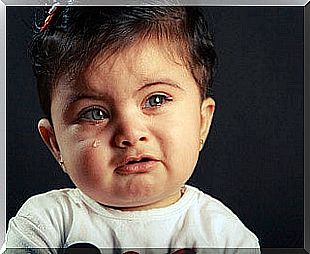
How to prevent conjunctivitis?
Children should not touch their eyes with dirty hands. Also, when a child suffers from infectious conjunctivitis, both he and the caregiver should wash their hands after touching their eyes or those of others.
This is necessary when applying eye drops or ointment. And know that sometimes it is impossible to prevent contamination between people who live together.
How to treat watery eyes?
The Spanish Association of Pediatrics recommends that to improve the situation, analgesics or cold or warm compresses can be administered.
The secretions and cones should also be cleaned and the eyelids removed with warm boiled water, sterile saline or a suitable pharmaceutical liquid.
Pediatricians claim that medical treatment for conjunctivitis consists of applying a few drops of eye drops, ointment or antibiotic gel.
Usually the treatment lasts a week, the drops should be applied frequently, between four or six times a day and the ointment or gel two or three times every 24 hours.
The ointment can blur your baby’s eyes so it’s best applied overnight. The gel has the advantage that it can be applied less often than the eye drops (like the ointment), it does not cloud the eyes, but it can only be applied alone, restricting the treatment possibilities to just one antibiotic.
Children generally tolerate the treatment well, but it can be a real challenge to apply a drop into the eye several times a day for a week in a struggling child.
To deal with this situation, lie your child with his head tilted back and looking up ; when he has his eyes closed, apply a drop to the inside of his eyelid. Ideally, you open and close it for a few seconds.
Newborn conjunctivitis is sometimes more delicate. Therefore, in maternity hospitals, drops are applied to the baby’s eyes to prevent contagion by germs coming from the maternal genitals during childbirth.
